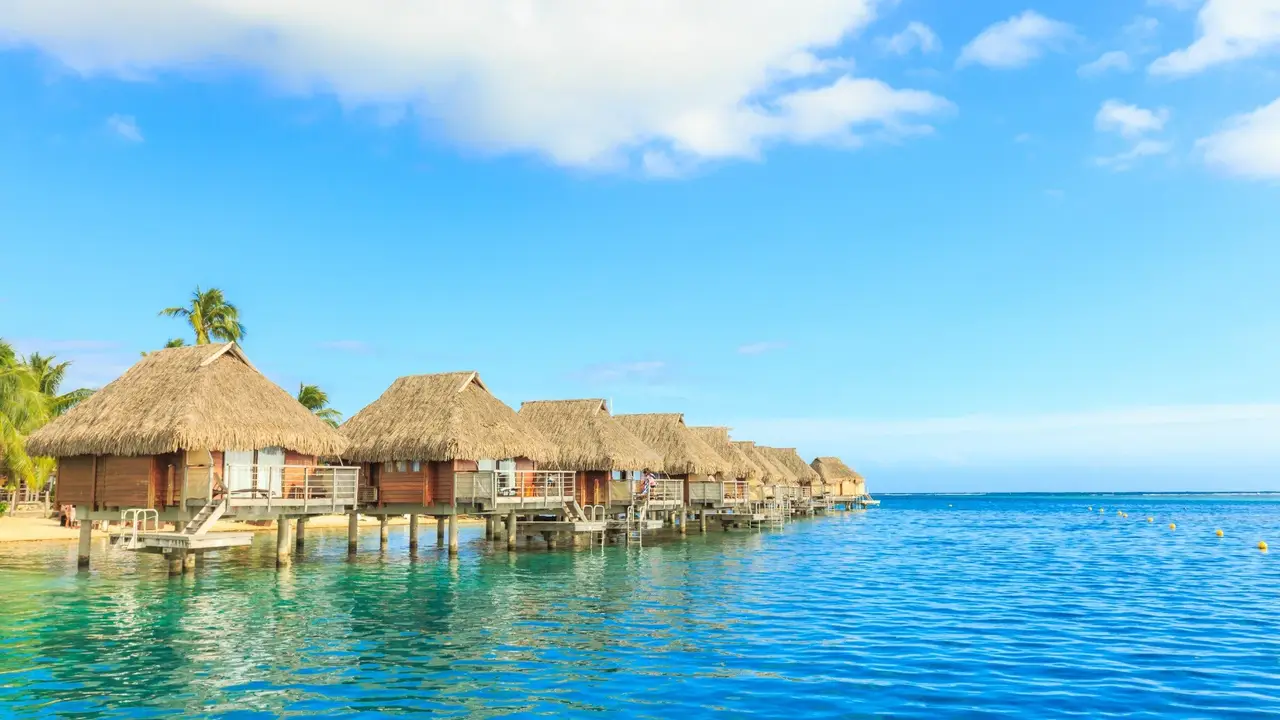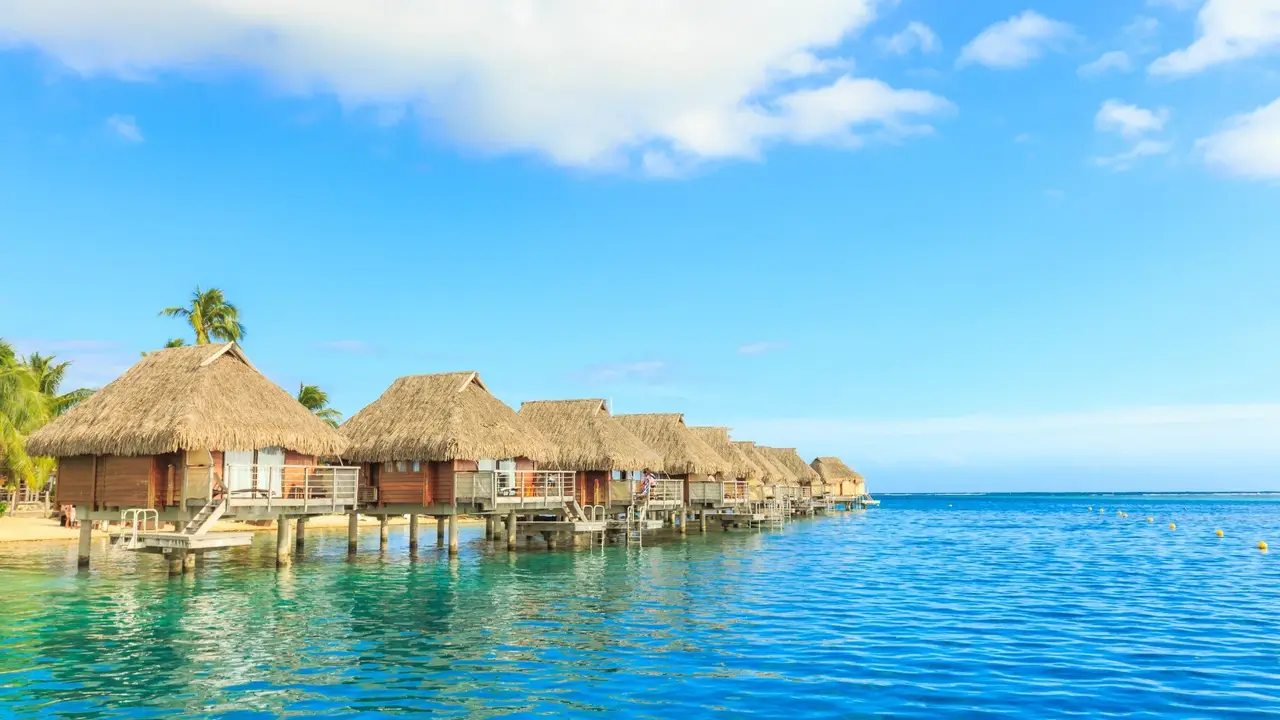Best Scuba Diving Liveaboards for Extended Trips
Review of top liveaboard vessels providing unparalleled access to remote and pristine dive sites.

Best Scuba Diving Liveaboards for Extended Trips
Why Choose a Scuba Diving Liveaboard for Your Next Adventure
So, you're thinking about your next dive trip, and the idea of a liveaboard has popped into your head. Good on you! Liveaboards are essentially floating dive resorts, taking you to the best dive sites, often far from the crowds and daily boat trips. Imagine waking up, having breakfast, and then just rolling into the water for your first dive of the day. No long commutes, no packing and unpacking gear every day, just pure, unadulterated diving. They offer unparalleled access to remote and pristine dive sites that you simply can't reach with day boats. This means more dives, often in better conditions, and a chance to truly immerse yourself in the underwater world. Plus, the camaraderie with fellow divers on board is something special. You're all there for the same reason, sharing stories, tips, and incredible experiences. It's a unique way to travel and dive, offering a level of convenience and dive site access that's hard to beat.
Key Factors to Consider When Selecting Your Ideal Liveaboard Experience
Choosing the right liveaboard can feel a bit overwhelming with so many options out there. But don't worry, let's break down the key things you should consider to make sure you pick the perfect floating home for your dive adventure. Think about your budget first. Liveaboards range from budget-friendly options to super luxurious yachts, so knowing what you're willing to spend will narrow down your choices significantly. Next, consider the destination and the type of diving you're after. Are you dreaming of manta rays in the Maldives, hammerheads in Cocos Island, or vibrant reefs in Raja Ampat? Each destination offers a different kind of diving, so match it to your interests. The duration of the trip is also important. Some trips are a few days, others can be two weeks or more. How much time do you have, and how much diving do you want to do?
Then, think about the vessel itself. What kind of cabin do you prefer? Do you need an en-suite bathroom? How about common areas, dive deck space, and camera facilities? If you're into underwater photography, dedicated camera stations and charging points are a must. The number of divers on board can also impact your experience. Do you prefer a smaller, more intimate group, or are you okay with a larger vessel? Finally, consider the food and amenities. Most liveaboards offer full board, but the quality and variety of food can differ. Some even have hot tubs, massage services, or dedicated lounges. It's all about finding the right balance for your personal preferences and priorities.
Top Liveaboard Vessels for Unforgettable Dive Expeditions
Alright, let's talk about some of the best liveaboard vessels out there that consistently deliver incredible dive experiences. These are some of the cream of the crop, known for their excellent service, comfortable accommodations, and access to world-class dive sites.
Aggressor Fleet and Dancer Fleet Global Dive Adventures
The Aggressor and Dancer Fleets are practically household names in the liveaboard world, and for good reason. They operate in some of the most sought-after dive destinations globally, including the Galapagos, Cocos Island, Palau, Maldives, and the Red Sea. Their vessels are typically well-maintained, spacious, and designed with divers in mind. You'll find comfortable cabins, often with en-suite bathrooms, large dive decks, and dedicated camera facilities. They usually offer up to 4-5 dives a day, including night dives, and their experienced crew and dive guides are top-notch. The food is generally excellent, with a good mix of local and international cuisine. Prices for an Aggressor or Dancer trip can range from $3,500 to $8,000+ USD for a week-long trip, depending on the destination and cabin type. They are a solid choice for divers looking for a reliable, high-quality experience with a focus on maximizing dive time.
Maldives Aggressor II A Premier Maldivian Dive Experience
Let's zoom in on a specific example: the Maldives Aggressor II. This vessel is a fantastic option for exploring the stunning atolls of the Maldives. It's a 115-foot yacht with 11 cabins, accommodating up to 22 guests. Each cabin has individual climate control and a private bathroom. The boat features a spacious salon, a large sun deck, and a dedicated camera table. The diving in the Maldives is legendary for its manta rays, whale sharks, and vibrant coral reefs, and the Maldives Aggressor II puts you right in the heart of it. They offer 7-night itineraries, typically covering the central atolls. The crew is known for their professionalism and knowledge of the local dive sites. Expect prices for the Maldives Aggressor II to be in the range of $4,000 to $5,500 USD per person for a 7-night trip, excluding flights and some fees. It's a great choice for those who want a comfortable and well-organized dive trip in one of the world's most beautiful dive destinations.
Siren Fleet Luxury Diving in Southeast Asia
The Siren Fleet, including vessels like the SY Siren and MY Siren, offers a more boutique and luxurious experience, primarily focusing on Southeast Asia's most biodiverse regions like Raja Ampat, Komodo, and the Philippines. These custom-built yachts are known for their traditional Phinisi design, offering a unique blend of traditional charm and modern comfort. They typically have fewer guests than some of the larger liveaboards, creating a more intimate atmosphere. Cabins are spacious and well-appointed, and the dive decks are designed for serious photographers, with ample space and charging stations. The food is often a highlight, with gourmet meals prepared by onboard chefs. The Siren Fleet is perfect for divers who appreciate a higher level of comfort, personalized service, and access to some of the world's most pristine and remote dive sites. Prices for a Siren Fleet liveaboard can range from $5,000 to $9,000+ USD for a 7-10 night trip, reflecting their premium offerings.
Indo Siren Exploring the Wonders of Indonesia
The Indo Siren is a prime example of the Siren Fleet's commitment to luxury and exceptional diving. This 40-meter traditional Phinisi yacht operates in Indonesia, covering destinations like Raja Ampat, Komodo, and the Banda Sea. It accommodates up to 16 guests in 8 spacious cabins, each with air conditioning and an en-suite bathroom. The boat boasts a large dive deck, dedicated camera room, and a comfortable salon. The diving in Indonesia is unparalleled, with incredible biodiversity, healthy coral reefs, and unique macro life. The Indo Siren's itineraries are designed to maximize your exposure to these wonders. Expect to pay around $5,500 to $8,000 USD for a 7-10 night trip on the Indo Siren, depending on the itinerary and season. It's an investment, but one that promises an unforgettable dive experience in a truly spectacular setting.
Pelagian Dive Yacht Unrivaled Luxury in Wakatobi
If you're looking for the absolute pinnacle of luxury and personalized service, the Pelagian Dive Yacht, operating exclusively in Wakatobi, Indonesia, is in a league of its own. This 36-meter yacht caters to a maximum of 10 guests in 5 incredibly spacious and well-appointed cabins. It's designed for discerning divers who prioritize comfort, privacy, and access to some of the healthiest and most pristine reefs on the planet. The Pelagian offers unlimited diving, with highly experienced dive guides who know the Wakatobi reefs inside out. The food is gourmet, and the service is impeccable. This is not just a dive trip; it's a luxury vacation with world-class diving. Given its exclusivity and high-end offerings, the Pelagian comes with a premium price tag, typically starting from $7,000 to $10,000+ USD per person for a 7-night trip, often requiring booking well in advance. It's for those who want the very best and are willing to pay for an unparalleled experience.
Comparing Liveaboard Options Budget to Luxury
Let's put it all together and compare these liveaboard options across different price points and features. It's not just about the cost; it's about what you get for your money and what kind of experience you're looking for.
Budget Friendly Liveaboards Value for Money Diving
While the Aggressor, Siren, and Pelagian fleets are on the higher end, there are plenty of excellent budget-friendly liveaboards that still offer fantastic diving. In destinations like Thailand (Similan Islands), Egypt (Red Sea), and parts of Indonesia (Komodo), you can find liveaboards ranging from $1,500 to $3,000 USD for a week. These boats might have smaller cabins, shared bathrooms, or less luxurious amenities, but they still get you to the best dive sites and offer multiple dives a day. Examples include some of the local operators in the Similan Islands or the Red Sea. They are perfect for divers who prioritize dive time and destination over luxury accommodations. You might find yourself on a boat with more divers, and the food might be simpler, but the underwater experience can be just as rewarding.
Mid Range Liveaboards Comfort and Quality
The Aggressor Fleet often falls into this mid-range to upper-mid-range category. They offer a great balance of comfort, service, and access to prime dive sites without reaching the ultra-luxury price points. You're getting reliable operations, good food, and comfortable cabins. Other examples in this category might include some of the larger, well-established liveaboards in destinations like the Galapagos or Palau that aren't part of the Aggressor/Dancer fleets but offer similar levels of service and amenities. Prices here typically range from $3,000 to $5,000 USD for a week. This is a sweet spot for many divers who want a comfortable and hassle-free experience without breaking the bank.
Luxury Liveaboards Unparalleled Service and Exclusivity
The Siren Fleet and especially the Pelagian fall squarely into the luxury category. These liveaboards are designed for discerning travelers who want the best of everything: spacious cabins, gourmet food, personalized service, and often, fewer guests for a more exclusive experience. They often have dedicated camera rooms, top-tier dive guides, and itineraries that focus on less-visited, pristine dive sites. The price reflects this elevated experience, ranging from $5,000 to $10,000+ USD per person for a week. If you're celebrating a special occasion, or simply want to treat yourself to the ultimate dive vacation, these are the liveaboards to consider. They offer an experience that goes beyond just diving, focusing on the entire journey and comfort.
Essential Gear and Accessories for Your Liveaboard Journey
Packing for a liveaboard is a bit different from a resort stay. Space is often limited, and you'll be living in your dive gear for most of the trip. Here's a rundown of essential gear and some recommended products to make your liveaboard experience smooth and enjoyable.
Dive Gear What to Bring and What to Rent
First off, your personal dive gear. While most liveaboards offer rental gear, bringing your own ensures comfort and familiarity. You'll want your own mask, fins, and snorkel. For masks, consider something like the Atomic Aquatics Frameless Mask ($100-120) for its wide field of view and comfortable fit, or the Scubapro Synergy 2 TruFit Mask ($120-140) for its soft skirt. For fins, the Mares Avanti Quattro Plus ($150-180) are a popular choice for their power and efficiency, or the Scubapro Seawing Nova ($200-230) for a more modern design with excellent propulsion. A good quality snorkel like the Atomic Aquatics SV2 Snorkel ($50-60) is also handy for surface swimming.
Your BCD and regulator are crucial. If you dive frequently, owning these is a good investment. For BCDs, the Aqua Lung Pro HD ($500-600) is a durable and popular jacket-style BCD, while the Scubapro Hydros Pro ($900-1000) offers a more modular and travel-friendly design. For regulators, the Aqua Lung Legend LX Supreme ($700-800) is known for its cold-water performance and smooth breathing, or the Mares Abyss 22 Navy II ($650-750) for its robust design. Don't forget your dive computer! The Shearwater Perdix AI ($1000-1200) is a top-tier choice for advanced divers, while the Mares Puck Pro+ ($250-300) is an excellent entry-level option. Always bring a spare mask strap, fin strap, and O-rings. It's also a good idea to have a small save-a-dive kit with basic tools.
Camera Equipment Capturing Underwater Memories
If you're into underwater photography or videography, a liveaboard is the perfect place to hone your skills. You'll have plenty of time between dives to review shots, charge batteries, and prepare for the next session. For beginners, a compact camera like the Olympus TG-6 ($450-500) with its dedicated underwater housing (PT-059, $300-350) is an excellent choice. It's robust, easy to use, and takes surprisingly good photos and videos. For more serious enthusiasts, a mirrorless system like the Sony a6000 series (e.g., a6400, $900-1000 body only) with an appropriate underwater housing (e.g., Nauticam NA-A6400, $2000-2500) offers much more flexibility and image quality. Don't forget strobes or video lights. The Sea & Sea YS-D3 DUO Strobe ($800-900) is a powerful and versatile option, while the Bigblue VL4200P Video Light ($400-450) provides excellent continuous lighting for video. Bring plenty of spare batteries, memory cards, and a dedicated dry bag for your camera gear.
Personal Items and Comfort Essentials
Beyond dive gear, there are a few personal items that will make your liveaboard trip more comfortable. Pack light, quick-drying clothes. A good rash guard or two (like the O'Neill Basic Skins Rash Guard, $30-40) will protect you from the sun and jellyfish. Reef-safe sunscreen (e.g., Stream2Sea SPF 30 Mineral Sunscreen, $20-25) is a must to protect both your skin and the marine environment. A wide-brimmed hat and sunglasses are also essential. Bring a reusable water bottle to stay hydrated and reduce plastic waste. A small first-aid kit with motion sickness medication, pain relievers, and any personal medications is crucial. Ear drops (like Swim-EAR, $10-15) can help prevent ear infections. Finally, a good book or e-reader, and some downloaded movies or shows, can be great for downtime between dives or in the evenings.
Maximizing Your Liveaboard Experience Tips and Tricks
You've booked your liveaboard, packed your bags, and you're ready to go. Here are some tips to make sure you get the absolute most out of your trip.
Pre Trip Preparations and Health Considerations
Before you even step on the boat, make sure your dive skills are sharp. If it's been a while, consider a refresher course. Get your gear serviced, especially your regulator, to avoid any issues during the trip. Check your dive insurance (e.g., DAN, DiveAssure) to ensure it covers liveaboard diving and potential medical emergencies. Get a medical check-up to ensure you're fit to dive, especially if you have any pre-existing conditions. Research the dive sites you'll be visiting so you know what marine life to look out for. Pack a small, soft-sided bag for your personal items, as hard luggage can be difficult to store on board.
On Board Etiquette and Dive Operations
Once on board, listen carefully to the captain's and dive guides' briefings. They'll cover safety procedures, dive site specifics, and boat rules. Be respectful of other divers' space and gear. Liveaboards can be tight quarters, so tidiness is appreciated. Be on time for dive briefings and departures. Don't forget to log your dives! Most liveaboards have a logbook station, and it's a great way to remember your experiences. Hydrate constantly, even if you don't feel thirsty, as dehydration can contribute to decompression sickness. And most importantly, have fun and be open to meeting new people. The shared experience of a liveaboard often leads to lasting friendships.
Photography and Marine Life Encounters Best Practices
For photographers, utilize the dedicated camera facilities. Charge your batteries whenever possible, and clean your housing after every dive. Be mindful of other divers when taking photos; don't block their view or hold up the group. When encountering marine life, remember to observe, not disturb. Maintain a respectful distance, avoid touching anything, and control your buoyancy to prevent accidental contact with corals or creatures. Your dive guides are a wealth of knowledge, so ask them about specific marine life you're hoping to see or photograph. They often know the best spots and times for encounters.
The Unforgettable Experience of Liveaboard Diving
Liveaboard diving is more than just a vacation; it's an immersive adventure that takes you to the heart of the ocean's most spectacular realms. From the moment you wake up to the sound of waves, to the thrill of discovering a new species on a night dive, every moment is designed around your passion for the underwater world. It's about disconnecting from the daily grind and reconnecting with nature, sharing incredible moments with like-minded individuals, and pushing the boundaries of your diving skills. Whether you choose a budget-friendly option or a luxurious yacht, the core experience remains the same: unparalleled access to pristine dive sites, abundant marine life, and the freedom to dive to your heart's content. So, if you're ready for an extended trip filled with endless blue and unforgettable encounters, a liveaboard might just be your perfect next dive adventure.
:max_bytes(150000):strip_icc()/277019-baked-pork-chops-with-cream-of-mushroom-soup-DDMFS-beauty-4x3-BG-7505-5762b731cf30447d9cbbbbbf387beafa.jpg)






